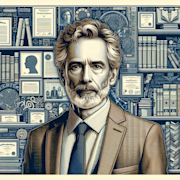Dicken's A Tale of Two Cities: Revolution and Resurrection

In Charles Dickens’ classic novel, A Tale of Two Cities, the themes of revolution and resurrection play a significant role in shaping the story. Set against the backdrop of the French Revolution, the novel explores the themes of sacrifice, redemption, and rebirth. Through the lives of its characters, Dickens delves into the complexities of human nature and the enduring power of hope and love.
The French Revolution: A Time of Turmoil
The French Revolution serves as the historical backdrop of the novel, setting the stage for the tumultuous events that unfold. As the aristocracy faces off against the oppressed lower classes, a sense of revolution and change permeates the air. The brutality and violence of the revolution are vividly depicted in the novel, from the storming of the Bastille to the bloodthirsty mobs roaming the streets of Paris. Dickens paints a bleak picture of a society torn apart by class struggle and political unrest, highlighting the dehumanizing effects of revolution.
Resurrection: A Theme of Redemption
At the heart of A Tale of Two Cities lies the theme of resurrection, both in a literal and metaphorical sense. The character of Dr. Manette, who has been unjustly imprisoned for eighteen years, is a prime example of this theme. Through the efforts of his daughter, Lucie, Dr. Manette is freed from his mental prison and experiences a rebirth of sorts. His journey from the depths of despair to a renewed sense of purpose symbolizes the power of redemption and the possibility of starting anew.
Similarly, the character of Sydney Carton undergoes a profound transformation throughout the novel. Initially portrayed as a cynical and disillusioned man, Carton finds redemption through his selfless sacrifice for the ones he loves. His decision to switch places with Charles Darnay, ultimately facing the guillotine in his place, showcases the ultimate act of resurrection and redemption. Carton’s final words, “It is a far, far better thing that I do, than I have ever done,” embody the theme of sacrifice and selflessness that runs throughout the novel.
Sacrifice and Love: Themes of Hope
Love and sacrifice are intertwined throughout the novel, serving as beacons of hope in a time of darkness. The selfless love between Lucie Manette and Charles Darnay transcends social barriers and offers a glimmer of light amidst the chaos of the revolution. Lucie’s unwavering devotion to her father and her husband demonstrates the power of love to overcome hardship and despair.
Additionally, the sacrifice made by Sydney Carton for the sake of his love for Lucie and his desire for her happiness exemplifies the theme of selflessness and redemption. Through his ultimate act of sacrifice, Carton not only secures Lucie’s future but also finds peace and solace in his final moments. Love and sacrifice are portrayed as transformative forces, capable of bringing about change and renewal in the darkest of times.
Conclusion: The Enduring Power of Hope
A Tale of Two Cities is a powerful exploration of the human spirit in the face of adversity and upheaval. Through its vivid characters and compelling narrative, Dickens weaves a tale of revolution and resurrection that resonates with readers to this day. The themes of sacrifice, redemption, and love serve as reminders of the enduring power of hope and the capacity for renewal in the midst of turmoil. As the characters of A Tale of Two Cities navigate the tumultuous events of the French Revolution, they discover that even in the darkest of times, there is always the possibility of resurrection and redemption.

Johnathan Evans
Journalist
More From Classics Authority Books

Book
Sister Carrie by Theodore Dreiser

Book
In Cold Blood by Truman Capote

Book
Maugham's The Razor's Edge: Spiritual Quest in a Post-War World

Book
C.S. Lewis and the Narnian Chronicles: Beyond the Wardrobe

Book
Fahrenheit 451 by Ray Bradbury

Book
The Power of Satire: Jonathan Swifts Gullivers Travels





